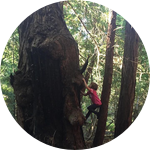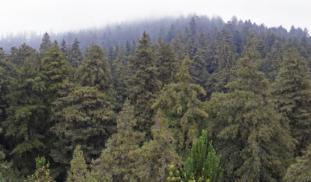Please wait...
About This Project
The current drought in California is causing widespread impacts in many ecosystems throughout the state, but the extent of drought effects on redwood trees and forests is uncertain. We want to evaluate how the drought is impacting southern redwood forests in order to help understand and predict how this unique ecosystem might respond to a future changing climate.

Browse Other Projects on Experiment
Related Projects
How do polar bears stay healthy on the world's worst diet?
Polar bears survive almost entirely on seal fat. Yet unlike humans who eat high-fat diets, polar bears never...
Uncovering hidden insect diversity associated with a likely undescribed gall-forming midge
Does a likely undescribed species of gall-forming midge (pers. comm. Ray Gagné) on Eriodictyon plants (Yerba...
Macrofungi of the California archipelago
The eight islands of the California Archipelago are a well-studied biodiversity hotspot — but we know almost...





